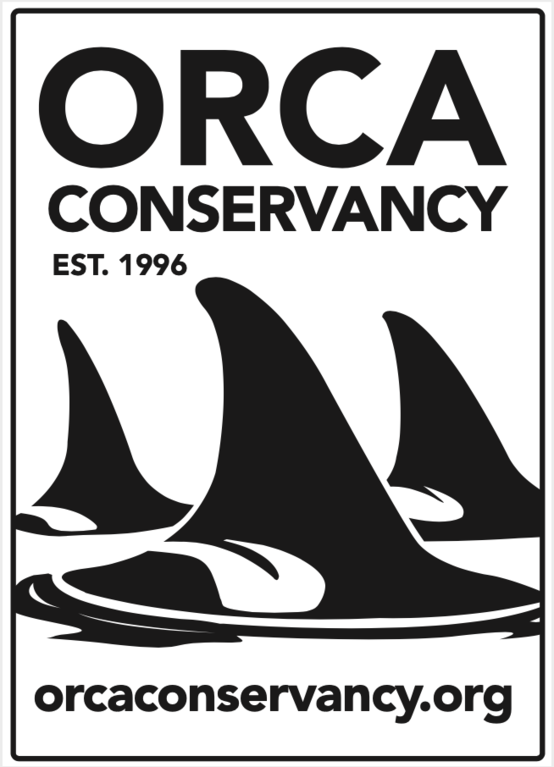The Plight of Southern Resident Killer Whales : A Tribal ViewPoint
Artwork: Jason Gobin | Guest Blog: James Ives | Principia High School | Senior Project
The Creation of the Orca Task Force
In the Spring of 2018, Washington governor, Jay Inslee decided to ally with experts on killer whales known as the Orca Task Force. Their responsibilities and duties were to make recommendations that would help killer whales now while also making long-term plans to sustain their population. Much attention was drawn to the struggles and dangers of the critically endangered Southern Resident killer whale (SRKW) population in August 2018. One of the saddest sights in wild killer whale history occurred when 20-year-old (SRKW), Tahlequah, carried her dead baby for more than 17 days and over 1,000 miles. Before this occurred earlier in the year three other SRKWs had also died. As of today, there are only 75 SRKWs. One of the prominent members of this task force was Cecilia Gobin. Cecilia Gobin is a Northwest Indian Fisheries Commission Analyst (NWIFC) who works in the habitat division of the commission. She has done many years of work towards guarding the treaty rights, salmon, and ecosystems that are around killer whales and salmon.
The History Behind NWIFC
The Northwest Indian Fisheries Commission (NWIFC) is an organization that serves the 20 treaty tribes located in western Washington. They have claimed this land for fishing and have rights since time immemorial. Fishing rights which were protected under the Treaty of 1854 and 1855. This organization first started in 1974. Washington state also recognizes the tribes as co-managers of fisheries including an equal amount of salmon harvest every year. Cecilia Goblin grew up in the Tulalip tribe. Similar to the Lummis Tribe they shared spiritual stories about killer whales. The Lummis Tribe in the past has referred to the whales as “ Que Lhol Mechen” or “ People that live under the water.” The Tulalip tribe has also referred to them as “ People that live under the water,” because when killer whales descend under the sea and swim with their families in their resident areas they are like people in a village under the sea. The Tulalip tribe has also referred to them as the Salmon People.
The Tulalip Cultural History With Killer Whales
One story that was very inspiring to Cecilia Gobin and shows the cultural connection this tribe has with killer whales is known as the story of the Two Seal Hunting Brothers. The story is about brothers who were amazing hunters. A man who was full of jealousy of the brothers made a seal that was cursed out of a tree log. The cursed seal took control of the brothers fishing boat and towed them away from the fish for many days until it eventually let them go. The two brothers became lost and as they were just about ready to give up they were transformed into killer whales and returned to their home to perform revenge on the jealous man that had created the cursed seal. This story means a lot to Cecilia because at one time when she was growing up her village had a great famine. There were far too many seals near their village and they were depleting the salmon returns which was ruining the ability of the village to hunt and fish for salmon. Following this famine, the killer whales also referred to as, The Black Fish - the brothers- by the Tulalip tribe and their descendants came to Cecilia's village. The Killer whales killed the seals and tossed them onto the shores of the beach. This substituted the fish they had previously used to feed their village bringing an end to the famine and also brought the local ecosystem back into balance so that they were able to see salmon returns once again. The most interesting thing about this story is it teaches people just how important and the true family connection the Tulalip tribe has with killer whales. Celia, being a member of the Tulalip tribe, has inherited responsibility for the protection of these whales. The killer whales are part of their ceremonial way of life, and their spirituality.
Celia Gobin View on Helping The SRKW
The Tulalip Tribe along with all the Washington Tribes have a very strong family bond with killer whales. When one Orca dies they view it as a death in their family. As a society, we must make the hard decisions to sustain this population. Celia Gobin has mentioned some very insightful ideas. During her first year as a part of the Orca Task Force, things were going well for a time but the hardest thing to deal with was politics. She says that they knew the steps and decisions they needed to make towards bettering the SRKW population but their plans would never come to light because of people arguing amongst themselves and never seeing a solution. People were not willing to make sacrifices that were needed if we were to look out for our SRKW. It is Celia's view that elected leaders need to take more aggressive actions towards making final decisions towards improving the quality of life for SRKW. I agree that it is time we start being more open to making hard decisions and sacrifices for the killer whales. They are in a very dire situation and if we don't take action now by making sacrifices for the greater good we could see the SRKW population cease to exist in a very short time.
